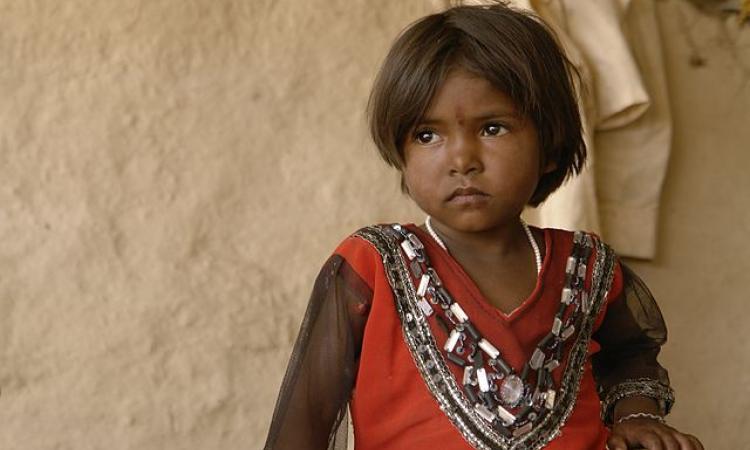
A study by the World Bank indicates that due to rising temperatures and changing monsoon rainfall patterns from climate change, India’s gross domestic product (GDP) may dip by 2.8 percent (amounting to $1177.8 billion) by 2050. The living standards of nearly half the country’s population will get depressed. Chhattisgarh and Madhya Pradesh will be the worst affected and may face more than nine percent decline in their current living standards.
These two states will be closely followed by Rajasthan, Uttar Pradesh and Maharashtra, which will also see a severe impact of the climate change. Seven out of the top 10 most affected districts in India belong to the Vidarbha region of Maharashtra with the remaining three districts located in Chhattisgarh and Madhya Pradesh.
In all, a carbon-intensive climate scenario is likely to impact lives of about 800 million people in South Asia of which 600 million will be in India. They reside in areas identified as “climate hotspots”—areas where the impact of climate change on living standards is expected to be the most severe.
Impact of climate change on the economy
The report, South Asia’s Hotspots: The Impact of Temperature and Precipitation Changes on Living Standards, released on June 28, 2018, in New Delhi predicts that climate hotspots may see an 11-12 percent dip in living standards, measured in terms of consumption expenditure.
These hotspots were mostly found to be water-stressed with minimal access to electricity and roads. They are not necessarily in higher temperature zones but reflect the local population’s socio-economic capacity to cope with the climatic changes.
The report provides a granular, spatial analysis of the long-term impacts of changes in average temperature and precipitation. It uses climate data in combination with household surveys to explain how changes in average weather will affect living standards. It provides long-term forecasts at a district level. The report also analyses two future climate scenarios—“climate-sensitive” in which some collective action is taken to limit greenhouse gas emissions and “carbon-intensive” in which no action is taken.
India’s average annual temperatures are expected to rise by 1°C to 2°C by 2050 even if preventive measures are taken along the lines of those recommended by the Paris climate change agreement of 2015. If no measures are taken, the average temperatures in India are predicted to increase by 1.5°C to 3°C by 2050.
South Asian region highly vulnerable
The report warns that the South Asian region is highly vulnerable to climate change and that average temperatures have been rising throughout the region and rainfall has become more erratic. These changes are projected to continue accruing over the coming decades. In India, the worst-affected will be those involved in agriculture if adequate measures aren’t taken to curtail climate change.
Half of India lives in the vulnerable areas and will suffer from declining living standards that could be attributed to falling agricultural yields, lower labour productivity or related health impacts. Changes in average weather will also reduce the growth of its GDP. The GDP losses are greater for severe hotspot regions.
The study also analyses other South Asian countries such as Pakistan, Sri Lanka and Bangladesh, and finds that areas identified as climate hotspots are often vulnerable in terms of socio-economic parameters.

“In Bangladesh, Cox Bazar which has recently been seeing an influx of Rohingya refugees is likely to be a severely affected climate and socio-economic hotspot. Similar is the case of Jaffna in Sri Lanka which is similar to Ramanathapuram in India in terms of climatic pattern and separated by just about 100 kilometres. However, Ramanathapuram does not emerge as a hotspot in the analysis whereas Jaffna emerges as a moderate to severe hotspot considering that it has faced the brunt of a civil war in recent times,” says Muthukumara Mani, the main author of the report and lead economist in the South Asia region of the World Bank. The other authors of the report are Sushenjit Bandyopadhyay, Shun Chonabayashi, Anil Markandya and Thomas Mosier.
“People always think of coastal areas—Mumbai, Chennai, Kolkata and not central parts of India as climate hotspots since they are more susceptible to immediate shocks of extreme events, such as major storms, droughts, and floods. This report in particular talks of impacts of rising temperatures and changing monsoon rainfall patterns from climate change. Central India came out as a climate hotspot as a result,” says Sudip Mozumder, lead external affairs advisor, World Bank.
Targeted climate policies and actions—way ahead for India
Mani says the Indian government needs to adopt a more focused approach to climate change. “All nations should strictly adhere to the Paris agreement of 2015 whose central aim is to strengthen the global response to the threat of climate change. India should play a key role in ‘pushing’ for global action to reduce greenhouse gas emissions. The impact of climate change would be irreversible otherwise,” says Mani.
The report suggests that focusing location specific resilience-building efforts on the most vulnerable areas and population groups can reduce hotspots. “Actions tailored to each country in the South Asian region are needed,” says Mani.
He believes that development is the best adaptation strategy. Ensuring better developmental outcomes through improved infrastructure and stronger institutional capacity to respond to climate change and natural disasters will help, according to Mani.
“To offset the negative economic impact in India, for example, our analysis suggests enhancing educational attainment, reducing water stress and improving job opportunities in the non-agricultural sectors. The analysis predicts that a 30 percent improvement on these measures could halt the decline in living standards by almost one percent from -2.8 percent to -1.9 percent,” says Mani.
Link to the report is here
/articles/climate-hotspots-affect-indias-economy